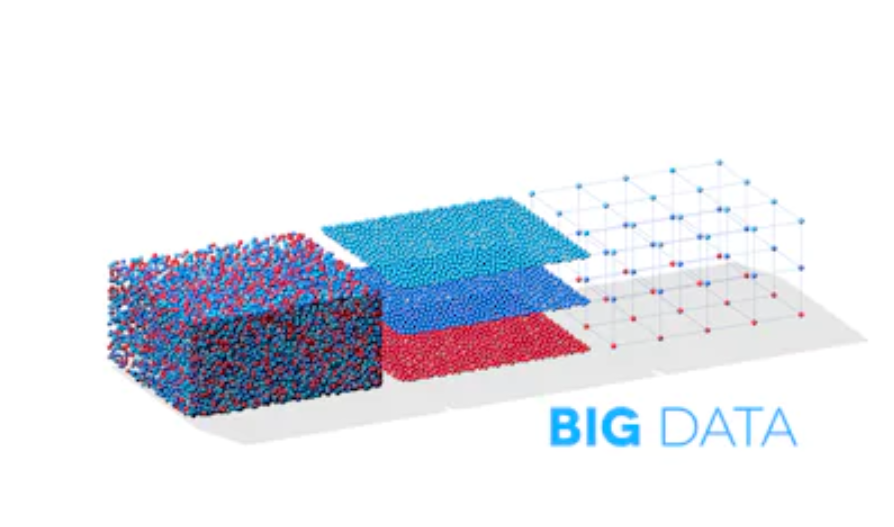相关文章
例子:
1 2 3 4 5 6 7 8 9 10 11 12 13 14 15 16 17 18 19 20 21 22 23 24 25 26 27 28 29 30 31 32 33 34 35 using System; using System.Collections.Generic; using System.Linq; using System.Text; using System.Threading.Tasks; namespace demo06 { class Program { public static int GetMax(int a,int b) // 求最大值函数 { if (a>b) { return a; } else { return b; } } public static void Add(int a, int b) // 求两数之和 { Console.WriteLine("{0}+{1}={2}", a, b, a + b); } public static void Main(string[] args) { int x = 2, y = 3; Add(x, y); Console.WriteLine("{0}和{1}中的最大值为{2}", x, y, GetMax(x, y)); Console.ReadLine(); } } }
当调用带有参数的方法时,需要向方法传递参数。在 C# 中,有三种向方法传递参数的方式:
值参数是参数传递的默认方式 。这种方式下,当调用一个方法时,会为每个值参数创建一个新的存储位置。
实际参数的值会复制给形参,实参和形参使用的是两个不同内存中的值。所以当形参的值发生改变时,不会影响实参的值 ,从而保证了实参数据的安全。
上述例子即为值参数传递:
1 2 3 4 5 6 7 8 9 10 11 12 13 14 15 16 17 18 19 20 21 22 23 24 25 26 27 28 29 30 31 32 33 34 35 using System; using System.Collections.Generic; using System.Linq; using System.Text; using System.Threading.Tasks; namespace demo06 { class Program { public static int GetMax(int a,int b) // 求最大值函数 { if (a>b) { return a; } else { return b; } } public static void Add(int a, int b) // 求两数之和 { Console.WriteLine("{0}+{1}={2}", a, b, a + b); } public static void Main(string[] args) { int x = 2, y = 3; Add(x, y); Console.WriteLine("{0}和{1}中的最大值为{2}", x, y, GetMax(x, y)); Console.ReadLine(); } } }
引用参数 引用参数是对变量的内存位置的引用 。当按引用传递参数时,与值参数不同的是,它不会为这些参数创建一个新的存储位置。引用参数表示和提供给方法的实际参数具有相同的内存位置 。
在C#中,使用ref关键字声明引用参数 。
例子:
1 2 3 4 5 6 7 8 9 10 11 12 13 14 15 16 17 18 19 20 21 22 23 24 25 26 27 using System; using System.Collections.Generic; using System.Linq; using System.Text; using System.Threading.Tasks; namespace demo07 { class Program { public static void swap(ref int a, ref int b) // 声明交换函数 { int temp; temp = a; a = b; b = temp; } static void Main(string[] args) { int x = 10, y = 20; swap(ref x, ref y); Console.WriteLine("x={0},y={1}", x, y); Console.ReadLine(); } } }
输出参数 return语句可用于只从函数返回一个值。但是,可以使用输出参数来从函数中返回两个甚至多个值 。
输出参数会把方法输出的数据赋值给自己 ,其他方面和引用参数相似(即out和ref一样,也是传递的指针 )。
例子:
1 2 3 4 5 6 7 8 9 10 11 12 13 14 15 16 17 18 19 20 21 22 23 24 25 using System; using System.Collections.Generic; using System.Linq; using System.Text; using System.Threading.Tasks; namespace demo08 { class Program { public static void Getvalue(out int x) { int temp = 666; x = temp; } static void Main(string[] args) { int a = 100; Console.WriteLine("在方法调用前a的值为:{0}", a); Getvalue(out a); Console.WriteLine("在方法调用后a的值为:{0}", a); Console.ReadLine(); } } }
提供给输出参数的变量不需要赋值。当参数需要从一个没有指定初始值的方法中返回值时,输出参数特别有用。
例子:
1 2 3 4 5 6 7 8 9 10 11 12 13 14 15 16 17 18 19 20 21 22 23 24 25 26 27 using System; using System.Collections.Generic; using System.Linq; using System.Text; using System.Threading.Tasks; namespace demo08 { class Program { public static void Getvalues(out int x,out int y) { Console.WriteLine("请输入第一个值:"); x = Convert.ToInt32(Console.ReadLine()); // 将字符串转成int类型 Console.WriteLine("请输入第二个值:"); y = Convert.ToInt32(Console.ReadLine()); // 将字符串转成int类型 } static void Main(string[] args) { int a, b; Getvalues(out a, out b); Console.WriteLine("方法调用后a的值:{0}", a); Console.WriteLine("方法调用后a的值:{0}", b); Console.ReadLine(); } } }
上述代码执行后,输出的a和b的值取决于用户输入。
ref和out的区别:
ref 是有进有出,即能将参数传进去,函数里对变量的改变在函数结束时会改变值,因此需要在传递进去前初始化。 out 是只出不进,即将参数传进去时值是无效的,out会把参数清空,所以无法将一个值从 out 传递进去。
ref的变量初始化了, out的变量不需初始化
菜鸟教程 ,相关文章
使用params修饰符来指定数组参数。
当方法参数中既有其他参数类型,又有params修饰的数组参数时,params参数必须放在最后面。只能有一个使用params修饰的数组参数。
例子:
1 2 3 4 5 6 7 8 9 10 11 12 13 14 15 16 17 18 19 20 21 22 23 24 25 26 27 28 using System; using System.Collections.Generic; using System.Linq; using System.Text; using System.Threading.Tasks; namespace demo08 { class Program { public static void GetSum(string name,params int[] scores) { int sum = 0; for (int i = 0; i < scores.Length; i++) { sum = sum+scores[i]; } Console.WriteLine("{0}的{1}门课总成绩为:{2}", name, scores.Length, sum); } static void Main(string[] args) { GetSum("张三", 76, 78, 89, 67, 89, 69); Console.ReadLine(); } } }
菜鸟教程
数组是一组具有相同数据类型的数据组成的集合。
一维数组中的每个数据都只有一个元素。
一维数组声明形式:
1 2 3 4 数据类型[] 数组名; // 仅声明名字,并未分配内存空间 数据类型[] 数组名 = new 数据类型[长度]; // 分配内存空间,用默认值初始化 数据类型[] 数组名 = {元素列表}; // 直接使用初始值来创建数组 数据类型[] 数组名 = new 数据类型[长度]{元素列表}; // 最完整的一维数组声明形式
二维数组声明形式:
1 2 3 4 数据类型[,] 数组名; // 仅声明名字,并未分配内存空间 数据类型[,] 数组名 = new 数据类型[第一维长度,第二维长度]; // 分配内存空间,用默认值初始化 数据类型[,] 数组名 = {{元素列表},{元素列表},{元素列表}...}; // 直接用初始值来创建数组 数据类型[,] 数组名 = new 数据类型[第一维长度,第二维长度]{元素列表};
锯齿数组:当一个一维数组的每个元素也是数组,且每个数组长度不同时,这样形成的数组统称为锯齿数组。(相关教程 )
数组的赋值和输出:
1 2 3 4 5 6 7 8 9 10 11 12 13 14 15 16 17 18 19 20 21 22 23 using System; using System.Collections.Generic; using System.Linq; using System.Text; using System.Threading.Tasks; namespace demo01 { class Program { static void Main(string[] args) { int[] arr = { 1, 2, 3, 4, 5, 666 }; arr[2] = 33; // 数组的赋值 foreach (var item in arr) // 数组的输出,这里使用foreach循环 { Console.WriteLine(item); } Console.ReadLine(); } } }
计算并输出一个数组的最大值、最小值、总和、平均值:
1 2 3 4 5 6 7 8 9 10 11 12 13 14 15 16 17 18 19 20 21 22 23 24 25 26 27 28 29 30 31 32 33 34 using System; using System.Collections.Generic; using System.Linq; using System.Text; using System.Threading.Tasks; namespace demo01 { class Program { static void Main(string[] args) { int[] arr = { 1, 2, 3, 4, 5, 666 }; int max=arr[0], min = arr[0], sum=0; double avg=0; foreach (var item in arr) { if (item>max) { max = item; } if (item < min) { min = item; } sum = sum + item; } avg = (double)sum / arr.Length; Console.WriteLine("最大值是{0},最小值是{1},总和是{2},平均值是{3}", max, min, sum, avg); Console.ReadLine(); } } }
注意:数组间的赋值,是赋予地址值。
可以使用params关键字,也可以直接使用数组作为方法形参(因为传递到形参是地址值,所以改变的还是原数组)
例子:
1 2 3 4 5 6 7 8 9 10 11 12 13 14 15 16 17 18 19 20 21 22 23 24 25 26 27 28 29 30 31 32 33 34 35 36 37 38 using System; using System.Collections.Generic; using System.Linq; using System.Text; using System.Threading.Tasks; namespace demo02 { class Program { // 定义一个方法,将一个一维整型数组的全部元素都+3 public static void Add3(int[] arr) { for (int i = 0; i < arr.Length; i++) { arr[i] = arr[i] + 3; } } // 定义一个方法,输出一个一维整型数组的全部内容 public static void PrintArr(int[] arr) { foreach (var item in arr) { Console.WriteLine(item); } } static void Main(string[] args) { int[] a = { 1, 2, 3, 4, 5, 666 }; Console.WriteLine("+3前数组为:"); PrintArr(a); Add3(a); Console.WriteLine("+3后数组为:"); PrintArr(a); Console.ReadLine(); } } }
字符串是一种特殊的引用类型。
例子:
1 2 3 4 5 6 7 8 9 10 11 12 13 14 15 16 17 18 19 20 21 22 23 24 25 26 27 28 29 30 31 32 33 34 35 36 37 38 39 40 41 42 43 44 45 46 47 48 49 50 51 52 53 54 55 56 57 58 59 60 61 62 63 64 65 66 67 68 69 using System; using System.Collections.Generic; using System.Linq; using System.Text; using System.Threading.Tasks; namespace demo03 { class Program { static void Main(string[] args) { string str = "helloworld"; // 1.Length属性,求字符串长度 Console.WriteLine(str.Length); // 2.字符串和字符、字符数组之间的转换 char ch1 = str[2]; // 字符串转字符 Console.WriteLine(ch1); string str2 = 'a'.ToString(); // 字符转字符串 char[] arr = str.ToCharArray(); // 字符串转字符数组 foreach (var item in arr) { Console.WriteLine(item); } char[] arr2 = { 'x', 'y', 'z' }; string str3 = new string(arr2); // 字符数组转字符串(通过string构造函数) Console.WriteLine(str3); // 3.查找指定字符或字符串在已知字符串中的位置 int i1 = str.IndexOf('o'); // IndexOf()可以有三个参数,具体可自行查看 int i2 = str.IndexOf("ll"); Console.WriteLine(i1); Console.WriteLine(i2); // 4.插入、替换、删除、截取字符串 string str4 = "abcde"; string str4_1 = str4.Insert(1, "123"); // 插入 Console.WriteLine(str4_1); // a123bcde string str4_2 = str4.Replace("de", "22"); // 替换 Console.WriteLine(str4_2); // abc22 string str4_3 = str4.Remove(1, 2); // 删除(2表示索引位数,3表示删除个数) Console.WriteLine(str4_3); // ade string str4_4 = str4.Substring(1, 3); //截取 Console.WriteLine(str4_4); // bcd // 5.分离字符串(字符串切割,Split) string str5 = "I have a dream"; string[] str5_1 = str5.Split(' '); // 字符串以空格切割(Split有一个重载方法可用于删除所有空格,可自行查找) foreach (var item in str5_1) { Console.WriteLine(item); } // 6.去除字符串两端的空格 string str6 = " hello world "; string str6_1 = str6.Trim(); Console.WriteLine(str6_1); // hello world Console.ReadLine(); } } }
使用parse方法。简单类型有一个共同的方法parse,可以将字符串转换为需要的简单类型。 **使用Convert类。**Conver类中包含了若干个方法,可以实现数据类型之间的转换。
注意:使用这两种方法,都要保证被转换的字符串可以正确转换成目标简单类型。
例子:
1 2 3 4 5 6 7 8 9 10 11 12 13 14 15 16 17 18 19 20 21 22 23 24 25 26 27 28 29 30 using System; using System.Collections.Generic; using System.Linq; using System.Text; using System.Threading.Tasks; namespace demo04 { class Program { static void Main(string[] args) { string str = "666"; // 1.使用parse方法 int i = int.Parse(str); Console.WriteLine(i + 1); // 转成数字了,667 bool b1 = bool.Parse("true"); // 其他类型的转换同理 Console.WriteLine(b1); // 2.使用Convert类 int i2 = Convert.ToInt32(str); Console.WriteLine(i + 2); // 转成数字了,668 bool b2 = Convert.ToBoolean("false"); // 其他类型的转换同理 Console.WriteLine(b2); Console.ReadLine(); } } }
补充TryParse:
1 2 3 string s = "123"; int result = -1; bool b = int.TryParse(s,out result)
(result作为输出值,如果转换失败则输出值为0 )具体用法可自行转换
字符串是一种特殊的引用类型。字符串中的内容是不可变的,当执行string str = "abc"; str = "cdd"时,并没有改变原来堆内存的数据(即"abc"),而是另外开辟一块新的堆内存空间保存新值(“cdd”),并将字符串变量在栈内存上的地址引用修改为新的堆内存地址("cdd"所在地址)
当程序中需要较多次字符串拼接操作时,可以使用StringBuilder操作。(具体可自行查找)






